EE offers 60% population coverage on 5G, plus 99% population coverage on 4G & 2G.
 In the UK, EE is a mobile network that offers three types of coverage: 5G, 4G, and 2G. Their fastest download speeds are available on 5G, with average speeds of 135Mbps. About 60% of the UK population is covered by EE’s 5G network.
In the UK, EE is a mobile network that offers three types of coverage: 5G, 4G, and 2G. Their fastest download speeds are available on 5G, with average speeds of 135Mbps. About 60% of the UK population is covered by EE’s 5G network.
EE also offers 99% population coverage across the UK on their 4G and 2G networks. You can access an average download speed of 43Mbps on EE’s 4G network.
In this article, we’ll discuss how you can check EE’s coverage in your area, including where you’re able to see a 5G, 4G, 3G and 2G coverage map for EE. We’ll then discuss each type of coverage in more detail before looking at EE’s international coverage and home broadband coverage.
Contents
EE Coverage Map
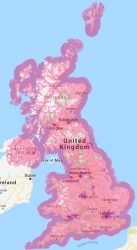 You can use EE’s online coverage map to check the availability of different types of coverage in your area.
You can use EE’s online coverage map to check the availability of different types of coverage in your area.
Go to EE’s online map and enter your postcode to see the types of coverage available in your area. The coverage map will show you results for each type of coverage (including 5G, 4G, 3G and 2G coverage). You’ll also see a breakdown of whether indoor coverage is available, or whether the coverage is only available outdoors.
Check EE Coverage Map (ee.co.uk) →
For the most accurate results, it’s worth providing the name of the device you’re using. This is because certain types of coverage like 4G Calling and 5G Calling are only available on certain phones and this will affect your results.
For more information, read on to find out more about the different types of coverage on EE.
EE Coverage Overview
At present, EE offers four different types of mobile coverage in the UK:
| EE Coverage Type | Coverage Level | Supported Bands & Frequencies |
|---|---|---|
| 5G Coverage | ✔ 60% population coverage |
|
| 4G Coverage | ✔ 99% population coverage (with 4G Calling on compatible phones and plans) |
|
| 3G Coverage | Closed | |
| 2G Coverage | ✔ 99% population coverage |
|
All EE customers are able to access 4G and 2G coverage. This provides a solid foundation of 99% population coverage across the UK, with an average download speed of 43Mbps when you’re connected to EE’s 4G network.
If you’d like to access EE’s 5G network, you’ll need a 5G-ready phone and 5G-ready plan. At present, 5G coverage is only available to EE Pay Monthly mobile customers. Some cheaper SIM-only deals remain 4G-only, along with EE’s Pay As You Go plans which are also limited to 4G.
As well as operating their own network, EE provides the underlying coverage for a number of other brands. In general, you’ll get the same coverage when using one of these other providers.
EE 5G Coverage
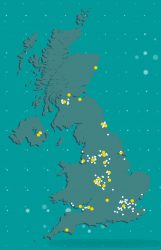 EE’s 5G network now covers around 60% of the UK’s population (as of 2023).
EE’s 5G network now covers around 60% of the UK’s population (as of 2023).
When you’re connected to EE’s 5G network, you can access download speeds of around 135Mbps on average (with peak speeds of up to 1,000Mbps in some cases). You’ll also benefit from more network capacity and a lower amount of latency which should make things more reliable and responsive.
EE’s 5G service uses New Radio (NR) technology. It uses 40MHz of spectrum within band n78 (3500MHz). If your mobile phone was purchased outside the UK, you should ensure it supports 5G coverage in this band.
EE 4G Coverage
 EE was the UK’s first network to launch a 4G service, all the way back in October 2012. You can use EE’s 4G network for high-speed mobile data, along with 4G Calling if you have a device that’s compatible with the service.
EE was the UK’s first network to launch a 4G service, all the way back in October 2012. You can use EE’s 4G network for high-speed mobile data, along with 4G Calling if you have a device that’s compatible with the service.
4G is now the most commonly used form of coverage on EE and it’s likely you’ll be connected to it most of the time. EE offers 99% population coverage on 4G, with an average download speed of 43Mbps according to a RootMetrics analysis (H1 2020). Exact speeds will vary, however, depending on your location and the device you’re using.
If you have a device that’s on this list, you’ll be able to use 4G Calling on EE. You’ll also need a compatible Pay Monthly plan to access 4G Calling.
In the UK, EE’s 4G network primarily uses band 3 LTE spectrum (1800MHz). This is supported by band 20 coverage (800MHz) and band 7 coverage (2600MHz) in many parts of the country. In a few selected locations, additional 4G coverage is also available in band 1 (2100MHz) and band 38 (2600MHz TDD).
EE 3G Coverage
EE’s 3G network was closed in March 2023. For this reason, you’ll no longer be able to use it for calls, texts or mobile data. Previously, EE’s 3G network was formed from the merger of Orange and T-Mobile, that took place in 2010.
EE 2G Coverage
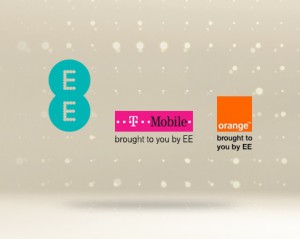
On EE, 2G or GSM coverage is the oldest form of coverage still in use today. Mainly serving as a backup for newer 3G and 4G mobile networks, as well as powering some internet-of-things (IoT) devices, there’s still 99% population coverage available on 2G with the ability to call, text and browse at dial-up internet speeds (up to 0.3Mbps).
EE’s 2G mobile network uses spectrum at 1800MHz. In recent years, some of the 1800MHz spectrum has been upgraded from 2G to 4G. This has reduced the amount of capacity on EE’s 2G network but it should still be possible to get a 2G service across most of the country.
International Coverage
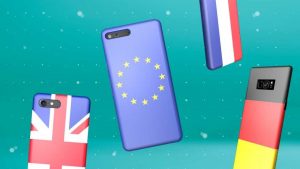 If you’re travelling abroad to another country, EE has an international roaming service allowing you to use your smartphone when abroad.
If you’re travelling abroad to another country, EE has an international roaming service allowing you to use your smartphone when abroad.
International roaming is available at no extra cost when you’re travelling within Europe. Beyond this, additional charges will normally apply unless you have a Roam Further Pass. This gives you inclusive roaming in the USA, Canada, Mexico, Australia and New Zealand.
At the time of writing, EE offers 4G coverage when roaming in 77 destinations. In other destinations, international roaming may be restricted to 2G or 3G speeds.
On EE, international roaming is currently available in the following destinations:
- Afghanistan (3G)
- Albania (4G)
- Algeria (2G)
- Andorra (3G)
- Angola (3G)
- Anguila (3G)
- Antigua and Barbuda (4G)
- Argentina (4G)
- Armenia (3G)
- Aruba (3G)
- Australia (4G)
- Austria (4G)
- Azerbaijan (4G)
- Bahamas (2G)
- Bahrain (4G)
- Bangladesh (3G)
- Barbados (3G)
- Belarus (3G)
- Belgium (4G)
- Belize (3G)
- Benin (Voice only)
- Bermuda (3G)
- Bolivia (Voice only)
- Bosnia Herzegovina (3G)
- Botswana (2G)
- Brazil (4G)
- British Virgin Islands (3G)
- Brunei Darussalam (Voice only)
- Bulgaria (4G)
- Cambodia (3G)
- Cameroon (3G)
- Canada (4G)
- Cape Verde (3G)
- Cayman Islands (4G)
- Central African Republic (Voice only)
- Chad (Voice only)
- Chile (3G)
- China (4G)
- Colombia (3G)
- Congo (Voice only)
- Congo (Democratic Republic of) (Voice only)
- Costa Rica (Voice only)
- Cote d’Ivoire (3G)
- Croatia (4G)
- Cuba (4G)
- Cyprus (4G)
- Czech Republic (4G)
- Denmark (4G)
- Dominica (2G)
- Dominican Republic (4G)
- Dutch Antilles (2G)
- Ecuador (Voice only)
- Egypt (3G)
- El Salvador (2G)
- Equatorial Guinea (Voice only)
- Estonia (4G)
- Falkland Islands (Voice only)
- Faroe Islands (Voice only)
- Fiji (Voice only)
- Finland (4G)
- France (4G)
- Gabon (Voice only)
- Gambia (3G)
- Georgia (2G)
- Germany (4G)
- Ghana (4G)
- Gibraltar (3G)
- Greece (4G)
- Greenland (3G)
- Grenada (3G)
- Guadeloupe (3G)
- Guatemala (Voice only)
- Guiana (French Department of) (3G)
- Guinea (3G)
- Guinea-Bissau (Voice only)
- Guyana (2G)
- Haiti (3G)
- Hong Kong (4G)
- Hungary (4G)
- Iceland (4G)
- India (4G)
- Indonesia (4G)
- Iran (3G)
- Iraq (3G)
- Ireland (4G)
- Israel (4G)
- Italy (4G)
- Jamaica (4G)
- Japan (4G)
- Jersey (4G)
- Jordan (4G)
- Kazakhstan (3G)
- Kenya (4G)
- Korea (South) (4G)
- Kuwait (3G)
- Kyrgyz Republic (Voice only)
- Laos (Voice only)
- Latvia (4G)
- Lebanon (3G)
- Lesotho (Voice only)
- Liberia (Voice only)
- Libya (Voice only)
- Liechtenstein (3G)
- Lithuania (4G)
- Luxembourg (4G)
- Macao (4G)
- Macedonia (3G)
- Madagascar (3G)
- Malawi (Voice only)
- Malaysia (4G)
- Maldives (Voice only)
- Mali (3G)
- Malta (4G)
- Maritime Services (AAM) (Voice only)
- Martinique (3G)
- Mauritius (4G)
- Mexico (4G)
- Moldova (4G)
- Monaco (4G)
- Mongolia (2G)
- Montenegro (4G)
- Montserrat (2G)
- Morocco (4G)
- Mozambique (Voice only)
- Myanmar (3G)
- Namibia (Voice only)
- Nepal (Voice only)
- Netherlands (4G)
- New Zealand (4G)
- Nicaragua (3G)
- Niger (3G)
- Nigeria (3G)
- Norway (4G)
- Oman (4G)
- Pakistan (3G)
- Panama (2G)
- Paraguay (Voice only)
- Peru (4G)
- Philippines (4G)
- Poland (4G)
- Portugal (4G)
- Qatar (4G)
- Reunion (French Department of) (Voice only)
- Romania (4G)
- Russia (4G)
- Rwanda (3G)
- Saudi Arabia (4G)
- Senegal (3G)
- Serbia (3G)
- Serbia (New) (3G)
- Seychelles (3G)
- Singapore (4G)
- Slovakia (4G)
- Slovenia (4G)
- South Africa (4G)
- Spain (4G)
- Sri Lanka (4G)
- St. Kitts and Nevis (3G)
- St. Lucia (3G)
- Sudan (3G)
- Suriname (2G)
- Sweden (4G)
- Switzerland (4G)
- Syria (Voice only)
- Taiwan (4G)
- Tanzania (3G)
- Thailand (4G)
- Trinidad and Tobago (3G)
- Tunisia (4G)
- Turkey (4G)
- Turkmenistan (Voice only)
- Reunion (French Department of) (Voice only)
- Turks and Caicos Islands (4G)
- UAE (4G)
- Uganda (3G)
- Ukraine (3G)
- Uruguay (2G)
- USA (4G)
- Uzbekistan (Voice only)
- Vanuatu (2G)
- Venezuela (Voice only)
- Vietnam (3G)
- Yemen (2G)
- Zambia (Voice only)
- Zimbabwe (2G)
Please see the EE website for more information about international roaming and how much it will cost you.
EE Home Broadband Coverage
 EE’s home broadband service is powered by the Openreach network so has a very different coverage profile to their mobile network.
EE’s home broadband service is powered by the Openreach network so has a very different coverage profile to their mobile network.
EE’s standard broadband is available in most UK homes, with fibre broadband available in more than 90% of homes. EE also offers Fibre Max plans using Gfast and FTTP (full fibre) technology, with around 20% of households currently able to get one of these faster plans.
For customers wanting a 4G or 5G-based alternative to regular broadband, EE also offers the 4GEE Home and 5GEE Home services. This gives you a home broadband connection that’s powered by EE’s 4G or 5G network – an attractive option if you’re unable to get good speeds through regular fixed-line broadband.
For more information, see our EE broadband review.
Frequently Asked Questions
| How can I check EE’s coverage in my area? | You can use EE’s online coverage map to check the availability of EE coverage in your area. Enter your postcode and the name of the device you’re using and you’ll be shown the results for 5G, 4G, 3G and 2G coverage where you live. |
|---|---|
| Does EE offer 5G coverage? | Yes. EE offers 5G coverage to around 60% of the UK’s population. You can see a full list of locations with 5G coverage from EE. |
| What download speeds will I be able to get on EE? | The exact download speeds you’ll get will depend on the coverage in your area as well as factors like the number of other people using EE’s network in your area at the same time. EE says their average download speed is 135Mbps on 5G and 43Mbps on 4G (figures from H1 2020). |
| Does EE offer any international coverage? | Yes. You can continue using your mobile phone when you travel abroad to other countries. There’s no extra charge if you’re travelling to another European country but extra charges will normally apply outside the EU. |
More Information
Please see EE’s official website for more information about their network and coverage in the UK. You can also read our in-depth guide to 5G coverage on EE.


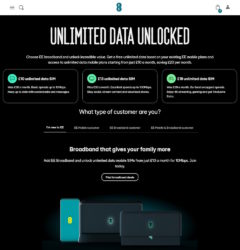

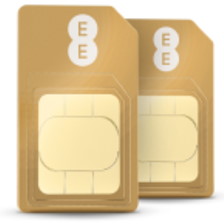
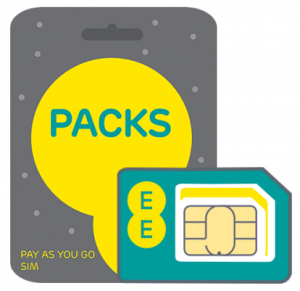


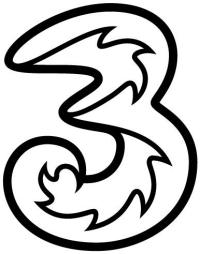
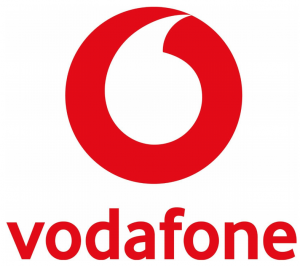
Jon said:
My question relates to whether 3G is adequate for using Waze or other routing app. Or, should I get 4G?
Ken replied:
Hi Jon,
Thanks for your comment and that’s a very good question! With a 3G connection, you’ll typically be able to get download speeds of around 4Mbps. Therefore, this should be absolutely fine for Waze (no urgent need to have a 4G connection).
Ken
Ajay said:
HI Ken
I am on network three and I am thinking to move on 4G EE double speed . Which mobile network is the best 4G EE or three
Ken replied:
Hi Ajay,
I’d probably say that EE has slightly better coverage but there’s no simple answer as it will differ depending on where you live and work. In the first instance, I’d probably compare the results from the Three coverage checker and the EE coverage checker. Once you’ve done that, see my guide to mobile phone coverage in the UK. If you’d like to test out coverage without the commitment of getting a new contract, you could consider ordering a free Pay As You Go SIM card.
Ken
Dana said:
I would say that EE’s signal coverage is generally very poor and rubbish. I was using Virgin sim only for two months last year and hardly had any signal where ever I was and people were complaining to me that the signal quality was so poor that they were not able to hear me. This year I had ordered free sim to call my country from UK not realizing that Delight Mobile is using EE network as when I put that sim into my phone the signal was either none at all or hardly there so EE hasn’t improved in their coverage whatsoever and their coverage map is pretty much a big bunch of lies as it is not true as their coverage just sucks.